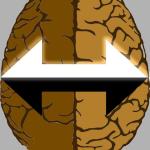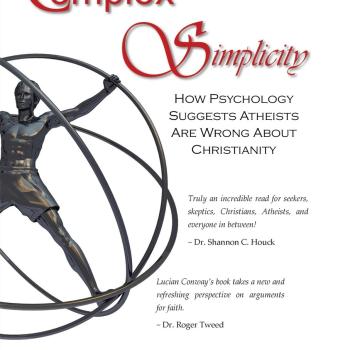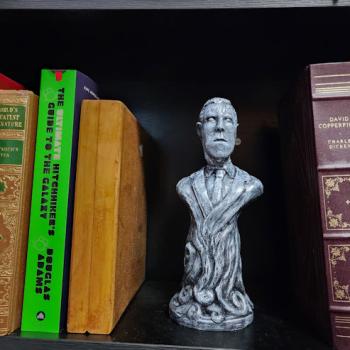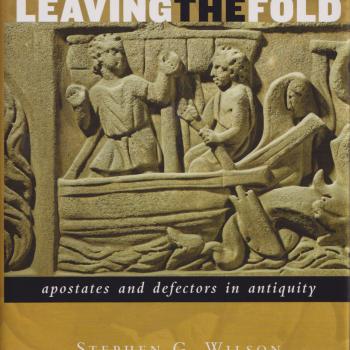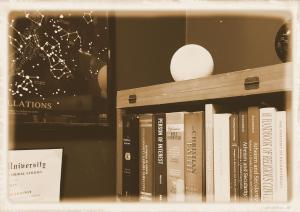
Pre-Scientific Views on Conversion
People have been practicing religion since the dawn of human history, and arguably before. And for all of that time, people have been changing their minds in relationship to religious belief. Pharaoh Akhenaten is said to have changed the religious landscape of Egypt by elevating Aten as the sole focus of worship. King Solomon is recorded in the Bible as having many foreign wives who turned him from worship of Israel’s God to the worship of pagan gods. In other parts of the scripture, foreign kings and generals are recorded as being impressed enough by Israel’s God to begin worshipping him. But nowhere is this regular changing of religious belief more apparent and well-documented than the rise of the evangelical religions such as early Buddhism, Christianity, and Islam.
Of course, throughout history, these radical changes have been assumed to be spiritual in nature. A person is spiritually inspired by the conviction coming from the spiritual truths that strike them, or they are deceived and drawn by evil depending on one’s perspective. Either way, it was the spiritual forces behind the religion which were assumed to cause the change in heart. It wasn’t until the dawn of modern psychology that people started asking the question of what is going on in the person’s environment and mind when such radical changes in behavior occur.
Early Psychology and Religion
There is some argument about the “dawn of modern psychology,” with some people arguing that humans have always been finding ways of explaining thoughts, treating mental illnesses, and manipulating behavior, even before this became its own area of study. The shift into what the world thinks of as “psychology” was relatively gradual as Enlightenment thinking began to cause people to look for systematic and mechanical explanations for the way the mind works rather than the more spiritualistic explanations of the past.
Early modern psychology took a rather cynical approach to religious beliefs and behaviors. Freud was confident that religion was invented to fulfill some craving for a father figure. Jung took religion to be an attempt to glom together and explain all of the architypes in the collective unconscious, and Skinner explained religion away as an attempt to modify human behavior through “rule-governed reinforcement.” It wasn’t until much more recently – mere decades ago – that psychology began to recognize the mental health benefits of religious beliefs and practices (but this is a topic for another article).
These early psychological explanations of religious behavior as a sort of “useful fiction” could not adequately explain, however, the very radical change in beliefs and behavior which appeared to be brought about very rapidly by religious conversion. The first well recognized attempt to explore religious conversion was done by psychologist Edwin Starbuck around the turn of the twentieth century. Starbuck was chiefly concerned with ways of teaching children morals and good character independent of religious instruction. However, at some point in his career, Starbuck began to collect a staggering number of accounts of people converting to religion. These accounts were discovered by William James – the man responsible for bringing psychology into the University as a legitimate form of academic pursuit. James used Starbucks’ data to write his landmark book The Varieties of Religious Experience. While not solely focused on the topic of conversion, James’ book spends a great deal of time on the subject.
Modeling Religious Conversion
James’ illustrates religious conversion using a parable of the president taking a camping trip. While in the White House in his suit and tie speaking of affairs of the state, the president is very much a politician. However, the same man clad in flannel and hoisting a backpack and fishing pole, talking of lake and forest would seem a very different person. James would say that the outdoorsman was the same person as the politician, but the “center of identity” shifts to a new focus as the man begins to hike.
James’ model was the standard for around 60 years until two new researchers came along and dug back into the subject. James was operating on data gathered in the deeply Christian society of the late 19th century. In the 1960s a couple of researchers named Lofland and Stark began their research in a communal cult. Whereas James’ subjects had grown up in a Christian environment and just invested themselves heavily into the default religion of that time, Lofland and Stark’s subjects were entering a novel Millenarian cult.
Had Loftland and Stark hung about a Methodist church looking to study converts, it would take a very long time to find enough subjects to get any substantial data. But because of the rapid growth of cults, L&S had an abundance of freshly converted subjects to study in order to develop their model. The L&S model is still highly regarded and studied to this day. The most currently accepted model is by the researcher Lewis R. Rambo, and this model still strongly resembles L&S’s model.
One of the things early researchers had to dispose of was the notion that religious conversion is an immediate event of inspiration wherein the person “sees the light” and changes all of his or her ways in a single moment. This is the standard notion of religious conversion held in common by most religious believers, and researchers call it the “Crisis Conversion Model.” William James himself held to more of a crisis conversion model in his work because the testimonials off of which he was working largely involved “come-to-Jesus” moments in which drunks saw the light and threw away their liquor, or teenagers in a Christian home had a spiritual inspiration and adopted religion as their primary focus. Little wonder that James saw conversion as a simple shift in focus. He was living in a society wherein these new converts had already been attending church their entire lives.
Later researchers began to see religious conversion as a graduating process wherein one transitions through certain phases until one is properly converted, with at least one researcher suggesting that there really is no termination point in religious conversion, and that it represents a lifelong process.
Current Research
This is about the point at which conversion research currently stands. The landmark volume on religious conversion, the Oxford Handbook of Religious Conversion is nearly 1,000 pages long and contains theories and findings from psychologists, sociologists, neurologists, and a variety of other specialist, exploring every facet of religious conversion including the way it alters the brain, affects immigrants, and even the feminist approach to the subject. That volume was published in the early 2010s.
The most recent and interesting work done in the field of religious conversion is the work of Jana Harmon, who specifically studies committed atheists who become believers. She published her 500-page dissertation on the subject around the turn of the decade and currently runs a podcast in which she interviews atheists who have become Christian. She still writes and speaks on her area of study, and her work is still ongoing.
The reason for this loss in interest or study in this field is partially due to the fact that it has been studied to exhaustion over the last 100 years, but it is also because Western society – Europe and the Americas – are becoming increasingly secularized, and religious practice as a whole is on the decline. What little study is still being done on religious conversion is being conducted in non-Western countries such as Asia and Africa where religious conversion is on the rise.
This recent secularization is also the reason that atheists who convert have become a subject of interest in recent years – because atheism is on the incline in the West, and the environment is becoming rich with potential data.
Future articles in this column will go into more details regarding models of religious conversion and the history of specific researchers in the field.


